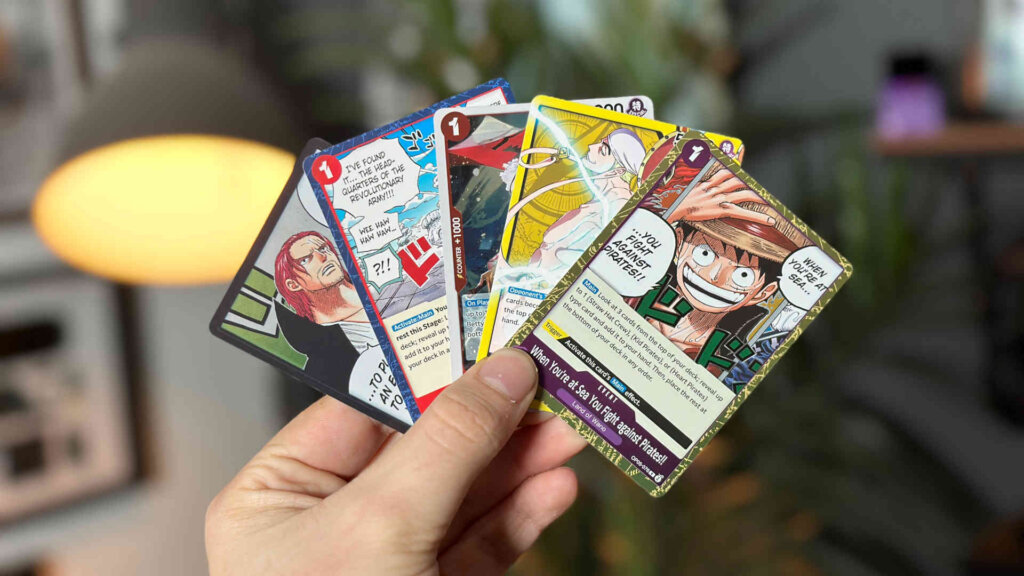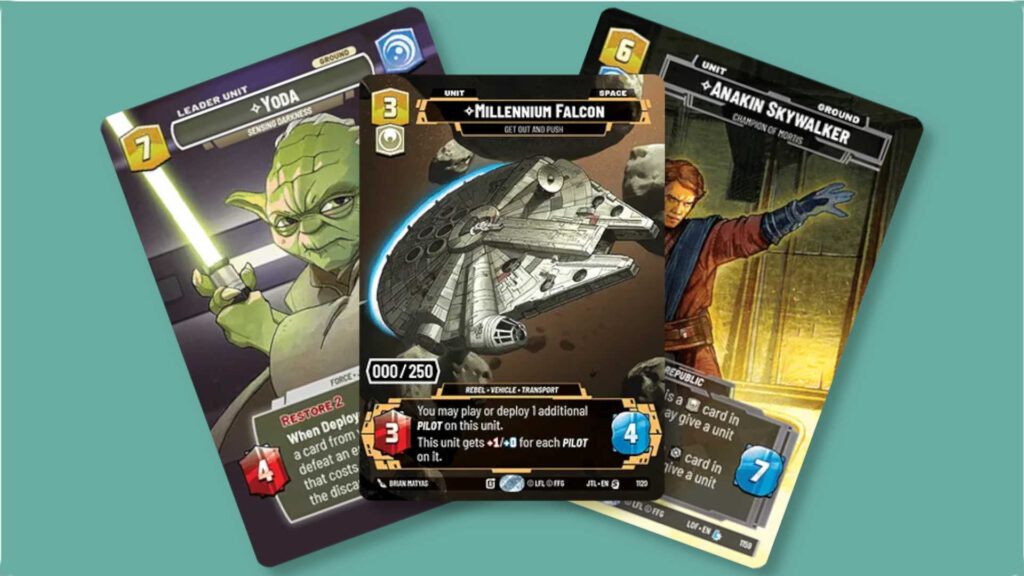One Piece has been around for over 25 years in one form or another, beginning as a manga in 1997, before making the leap to anime in 1999.
The saga had arguably its biggest year ever in 2023, with a Netflix live action series introducing many new fans to One Piece.
Though it had been adapted into a collectable card game (or CCG) in 2003, that incarnation of the game was relatively short lived.
The newest One Piece CCG (known as the One Piece Card Game) was released in 2022 and has been very well received by fans, players and even collectors, drawn in by unique, straightforward game mechanics, beautiful art and highly sought after, very rare variant cards across a wide range of sets.
So let’s take a closer look at the cards in the game and find out just what each type of card is, as well as what it does.
Table of Contents
Toggle1. Leader Cards
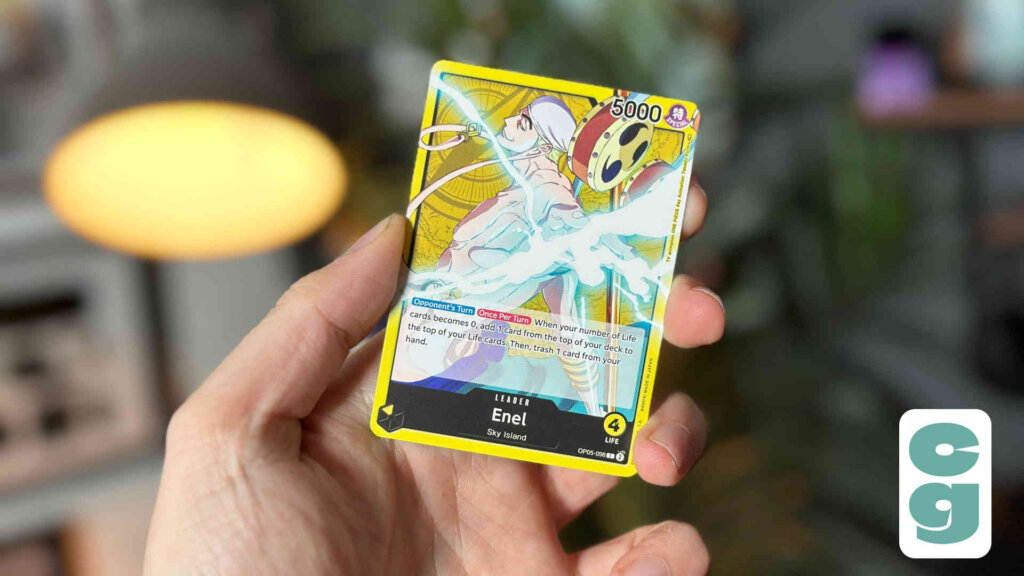
In the One Piece Card Game, each player must have a Leader card, which doesn’t count towards the number of cards they have in their deck (so that’s one Leader card and exactly 50 other cards, along with exactly 10 DON!! cards).
These cards are incredibly important, as the colour(s) of your Leader determines which colour cards you can have in your deck.

There are six different colours in the One Piece Card Game. Leaders have one or more denoted, not just in the overall colour of the card itself, but also on a hex in the bottom left of the card. In the example above, you can see that it’s a Yellow Leader card, and we’ve highlighted the hex to make it clear where it is.
Each player’s Leader card is placed, face up, in the Leader area of the play field, where they remain for the rest of the game.
Leader cards each have unique abilities, as well as different Power levels; our example shows a Power of 5000 in the top right of the card.

These cards also determine how much Life you have overall; the leader’s Life value, which we’ve highlighted in the image above, dictates how many cards you take from your draw pile to create your Life deck.
This last part is very important, as it is also one of the ways you can win or lose a game; in the One Piece Card Game, one of the victory conditions requires you to successfully attack an opponent’s Leader, when they have no Life cards left to draw.
So a combination of high Power, useful abilities and a good number of Life points is what you’re going to be looking for on any given Leader card!
2. Character Cards
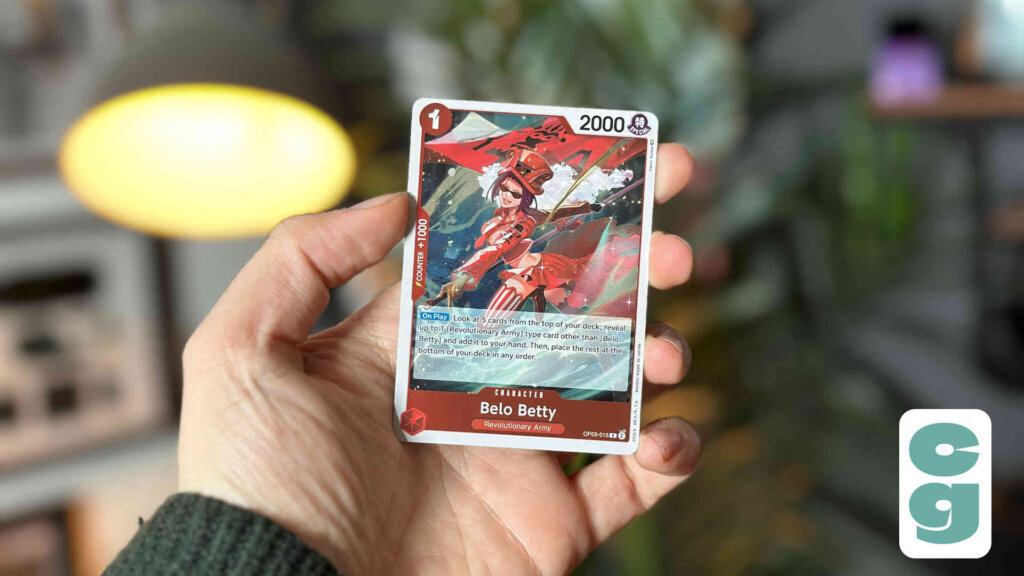
The main way to attack and defend in the One Piece Card Game is by using Character cards.
Unlike Leader cards, Characters have a cost in their top left corner; this is the cost to get the card into play, which you can pay using DON!! cards (more on those in a bit!).
So that’s one way to distinguish Character cards from Leaders, but as the card type is also noted just above the card’s name, there’s multiple ways to tell card types apart at a glance.
As noted above, the colour of cards in your deck must match the colour or colours of your Leader; if your Leader is Red, you can only use Red cards.
If they are Red and Green, you can use any combination of Red or Green cards in your deck.
Characters are ‘rested’ in order to attack; this is the term used in One Piece to describe turning a card on its side.
It’s the same as ‘tapping’ in Magic: The Gathering or ‘exhausting’ in Disney Lorcana.
Characters cannot attack on the first turn they’re played (much like ‘Summoning Sickness’ in Magic: The Gathering or ‘waiting for ink to dry’ in Lorcana), but when they’re able to, they can attack either the opponent’s Leader or any of their rested Characters.
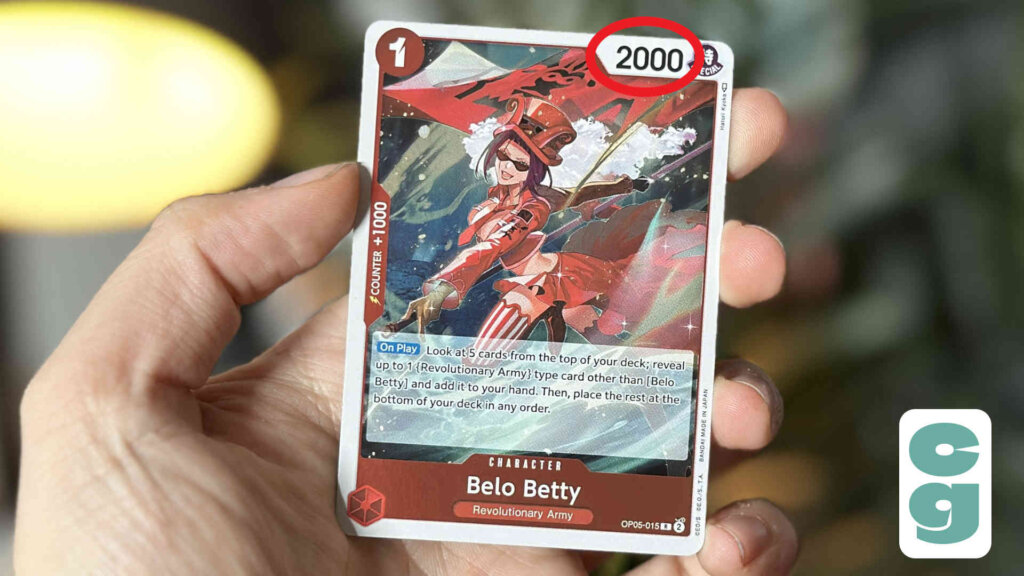
In the example above, the Belo Betty card has 2000 Power. Though certain card abilities (such as Blocker or Counter) can change the target of the attack or increase/decrease the Power levels in play, you generally just compare the Power number of the attacker and defender.
The highest number wins.
If the defender loses and the target is their Character, this Character is removed from play.
If the attacker loses, nothing happens.
If the defender loses and the target is their Leader, they take one damage and draw a card from their Life deck.
This summarises how Characters are used to progress and, hopefully, secure victory; as mentioned before, if a player has no cards to draw from their Life deck when their Leader takes damage, they lose!
3. Event Cards
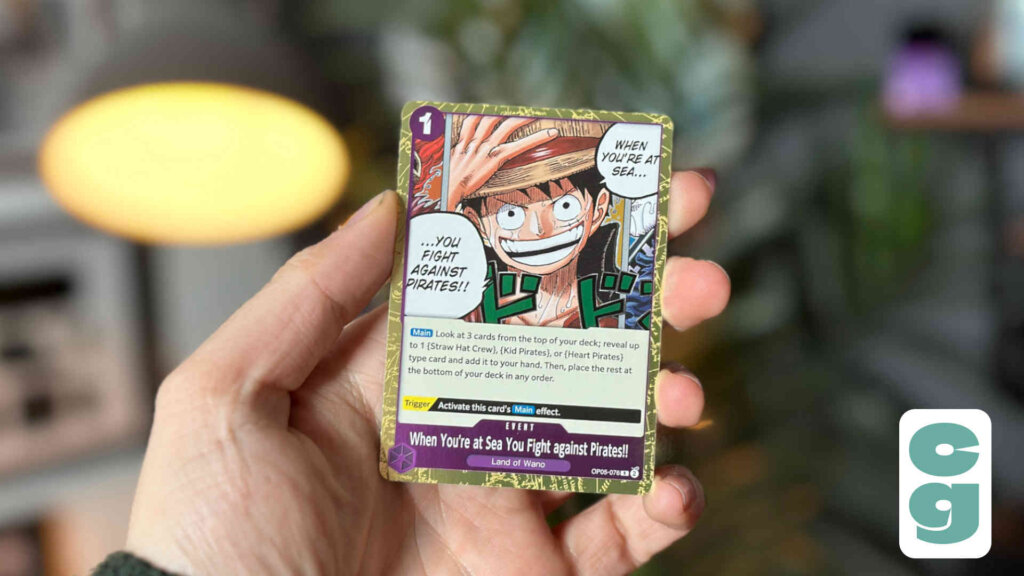
There’s a refreshing simplicity to the One Piece Card Game’s card types.
Games such as Magic: The Gathering have all kinds of different support cards, such as Instants, Sorceries and Enchantments. Even Pokémon, for all of its apparent simplicity, has Trainer cards that are sub-divided into different categories, such as Supporters, Items, Tools and more.
However, One Piece keeps it simple with its Event cards.
Event cards are special actions or abilities that are played from your hand, then discarded immediately.
Just like Characters, Events have their own cost and colour; so you can only play them if you have the DON!! cards to rest, along with only being able to use them in your deck if they match your Leader’s colour!
4. Stage Cards
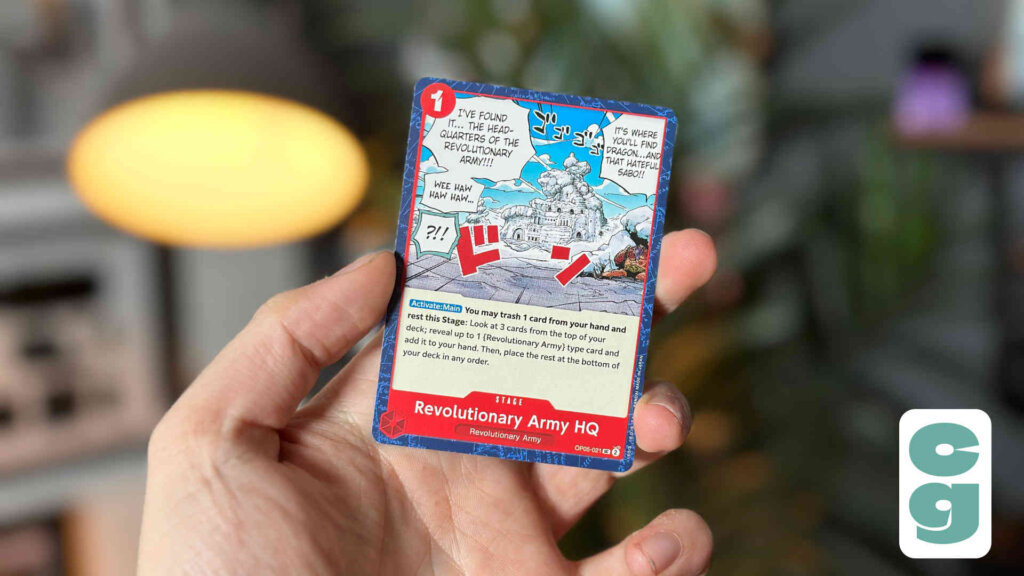
The closest equivalent to Stage Cards in other games that I can think of are Stadium cards in Pokémon; you can play these directly from your hand, just like Event cards, but they remain in play until a card effect removes them or you play another Stage card to replace it.
Stage cards are placed next to Leader cards and have a variety of effects that benefit the owner of the card.
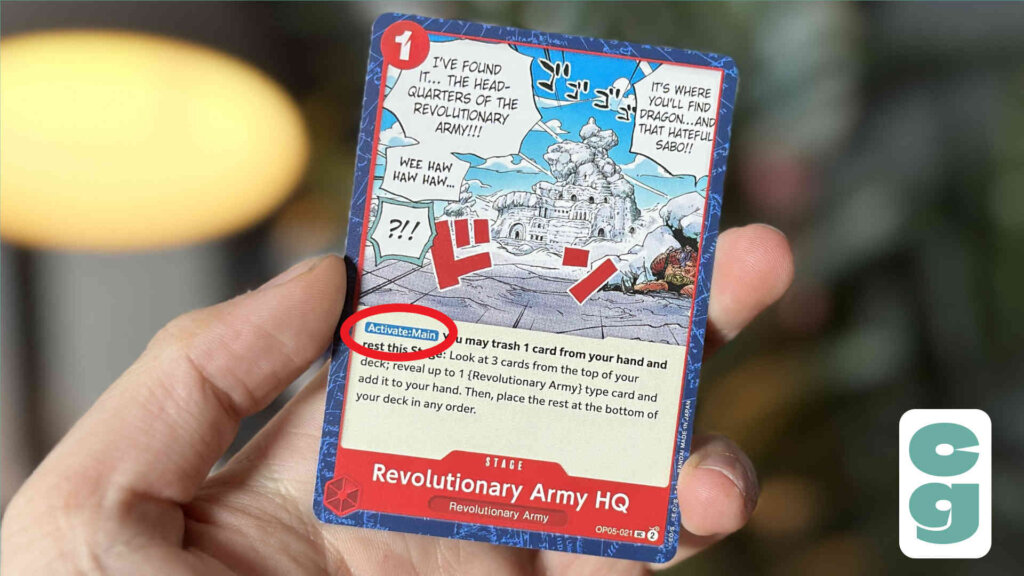
Just like any other card with an ability, these activate at specific times during a turn; for example, On Play means that it happens when the Stage card is played, Activate Main (the ability our example card has above, which we’ve highlighted) means you can use this ability during your Main Phase, and End of Your Turn is exactly how it sounds, because you use it at the (yes!) end of your turn, once you’ve done everything else.
5. DON!! Cards
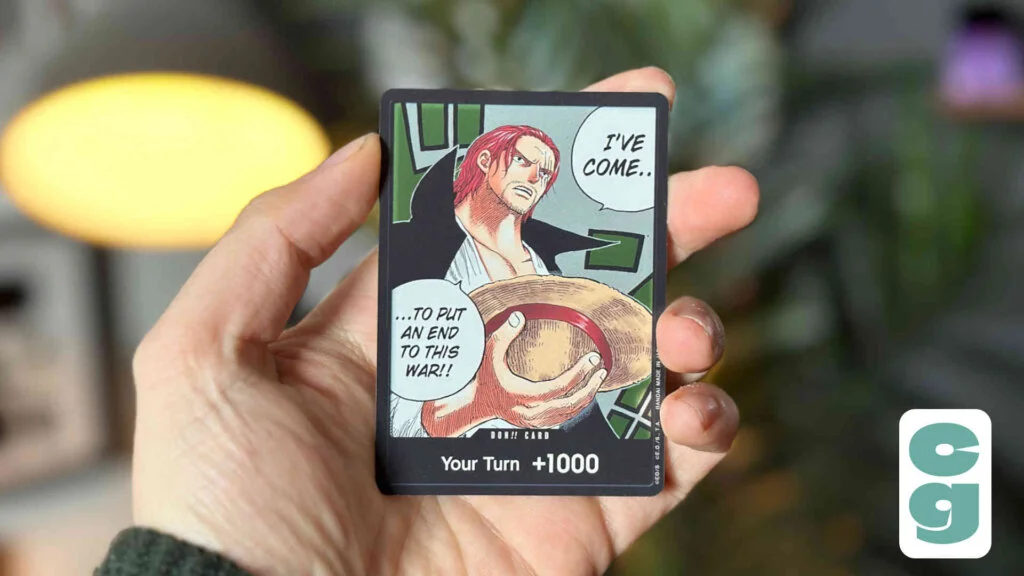
The final card type in the One Piece Card Game are DON!! cards.
Though you may see DON!! cards with fancy artwork or foil treatments, a plain DON!! card does exactly the same thing as any other, regardless of how elaborate the card may look!
Which is to say that DON!! cards, for the most part, act like Land cards (which provide Mana) in Magic: The Gathering or Ink in Disney Lorcana; you rest DON!! cards in order to pay for other cards to come into play.
Some card effects require DON!! cards in order to be used; for example, if a card states DON!! x1, that means it needs to have 1 DON!! card attached in order to activate the ability.
Attaching a DON!! card to a Character or Leader, is just a case of taking an active, non-rested DON!! card from the Cost Area and placing it under the card you’re attaching it to.
If it’s not being used for a card effect, attaching a DON!! card adds 1000 Power to the card; it’s also possible to attach multiple DON!! cards to a Character or Leader, giving them +1000 Power per attached card.
At the start of every turn, two DON!! cards are added from the DON!! deck to the cost area; this means that the One Piece has a steady pace and avoids the issue that many other games have.
For instance the problems of not drawing Land or Ink cards in Magic: The Gathering and Disney Lorcana respectively, or not having the Energy cards to power attacks as in Pokémon.
With DON!! cards also being used for card abilities or to strengthen Leaders and Characters, it provides a steadily increasing and versatile source of ‘energy’ that players can utilise in numerous, strategic ways!
For a more in depth look at the game’s rules, check out our beginner’s guide on to how to play the One Piece Card Game, and find what playstyle works for you with our guide to the One Piece Card Game’s colors!


